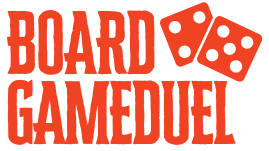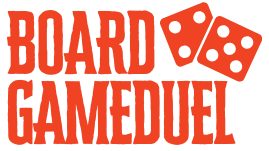Over the past few weeks, I dove deep into a detailed 2025 market report on the board game industry—the kind with charts, market share stats, and forecasts. It sounds dry, but as a lifelong board gamer and hobbyist, I found it absolutely fascinating.
Here’s what stood out to me, along with a few insights on where I think this industry is heading next.
The Board Game Boom Is Still Going Strong
As GlobeNewswire published a news release, the global board game market is projected to hit $34.1 billion by 2030, up from around $19.5 billion in 2024. That’s a huge leap, and the demand is coming from every corner of the world — not just North America and Europe, but rapidly growing markets in Asia-Pacific and Latin America too.
Tabletop Games Still Lead the Pack

Under the “product type” breakdown, tabletop games remain the dominant category. Think Catan, Ticket to Ride, and Wingspan. They combine accessibility with depth, making them perfect for families, hobbyists, and newcomers alike.
But right behind them are card and dice games, miniatures, RPGs, and even collectible card games, which are seeing a comeback thanks to nostalgia and strong online communities.
I’ve personally seen a surge in interest in games like Flesh and Blood and indie RPGs, even at local game cafés.
By Age Group: More Adults, More Money
What surprised me is just how much growth is being driven by the 12+ age group. While kid-focused games (ages 2–12) remain strong, the adult demographic (the so-called “Kidult” market) is where publishers are focusing innovation and investment.
Many modern titles are designed with:
- Longer play sessions
- Complex narratives
- Mature themes (without being “adult” in a negative way)
This tracks with my own experience — my game nights are full of 30-somethings debating worker placement strategies like it’s life or death.
Online Sales Are Surging (But Not Killing Retail)
Distribution is another area that’s shifting. Online stores saw major growth during the pandemic, and that momentum has continued into 2025. That said, specialty board game shops and even big-box stores like Target and Walmart still play a huge role, especially in casual discovery.
Many brands now follow a hybrid approach:
- Launch games via Kickstarter or online pre-orders
- Then move to retail once the buzz is built
Regional Trends Worth Watching

The report breaks down regional performance in detail, and a few trends stood out to me:
- North America still dominates in market value, led by the U.S.
- Europe (especially Germany and the UK) continues to be a hub for high-quality strategy games.
- Asia-Pacific markets like Japan, China, and South Korea are experiencing some of the fastest growth, both in manufacturing and consumption.
- Latin America and the Middle East are newer frontiers, but interest is clearly rising, driven by youth-focused games and mobile-friendly distribution.
Strategy, Fantasy, and Education Are Top Genres
When breaking it down by game type, the top performers are:
- Strategy & War Games – think Terraforming Mars, Twilight Imperium
- Fantasy Games – like Gloomhaven, Dungeons & Dragons
- Educational Games – increasingly used in classrooms and corporate workshops
Even sports-based games and “other” niche titles are seeing traction — especially as designers bring new mechanics to the table (pun intended).
Competitive Landscape: It’s Not Just Hasbro
Yes, Hasbro, Mattel, and Disney are still market giants, but the competitive landscape is getting broader and more indie-friendly. Publishers like CMON, Goliath, Clementoni, and PD Verlag are producing standout hits and carving niches globally.
Personally, I love discovering games from European publishers — their design elegance and component quality are consistently top-notch.
What About Challenges?

The report doesn’t gloss over the hurdles, either. Here are some key concerns:
- Rising manufacturing costs and tariffs are pushing up retail prices
- Supply chain delays have impacted game release cycles
- Piracy and low-cost knockoffs from overseas markets remain a threat
- Digital entertainment (like mobile games) continues to compete for attention
Still, the overall outlook is strong. Board games offer something uniquely social, tactile, and immersive — and that’s not going away anytime soon.
FAQs: Board Game Market in 2025
1. What types of board games are growing fastest?
Strategy games, educational games, and solo/2-player experiences are seeing major growth — especially titles with hybrid digital features.
2. Are physical board games losing to digital?
Not at all. Many games now integrate apps or online elements, but the core remains physical, social gameplay. In fact, many people are drawn to board games as a digital detox.
3. Which age groups are driving demand?
People aged 12 and up are the primary drivers of market growth. Adults are playing more, buying more, and spending more time learning complex games.
4. Are indie publishers competing with big names?
Yes! Crowdfunding and global printing partners have allowed smaller publishers to thrive. It’s never been easier to find or support a new game creator.
Also Read: Latest Cooperative Game Releases to Watch in 2025
Final Thoughts
Upon reading this report, my confidence in the longevity and rapid evolution of board games has increased. They’re smarter, more diverse, more accessible, and more global than at any time in gaming history.
Whether you’re a collector, a parent, or just someone looking to reconnect over a shared table, 2025 is a fantastic time to jump in.
Let me know if you want a deeper dive into a specific genre or region —I’ve got spreadsheets and notes, which I’d be more than happy to turn into another blog!









